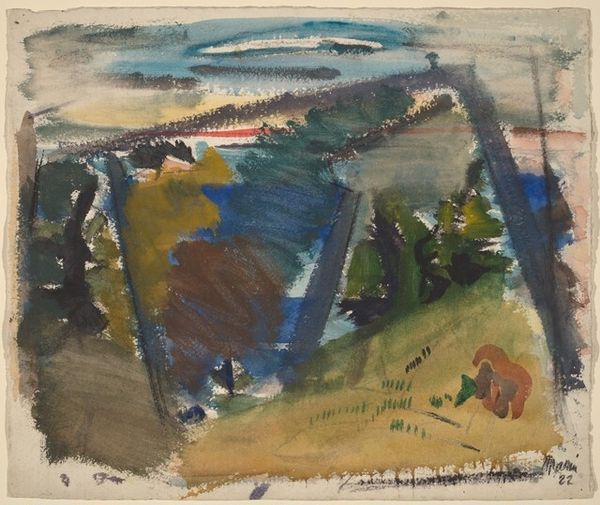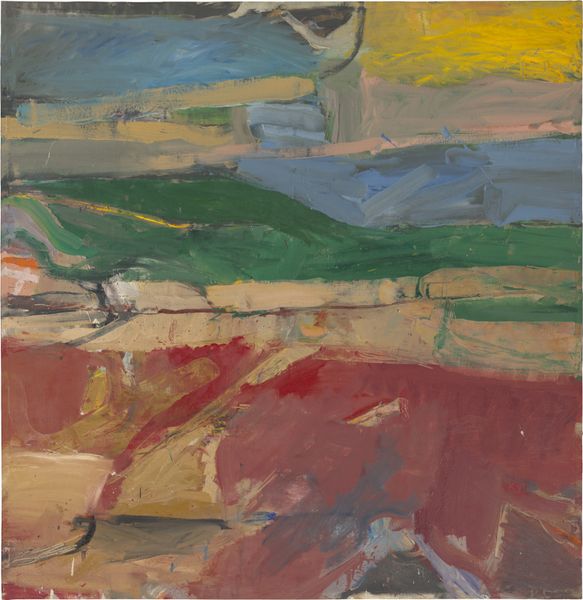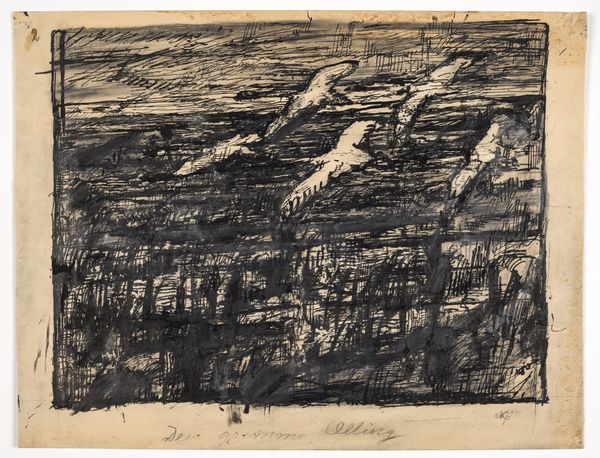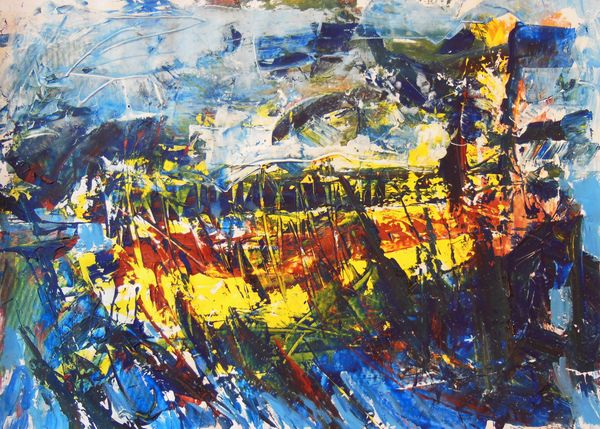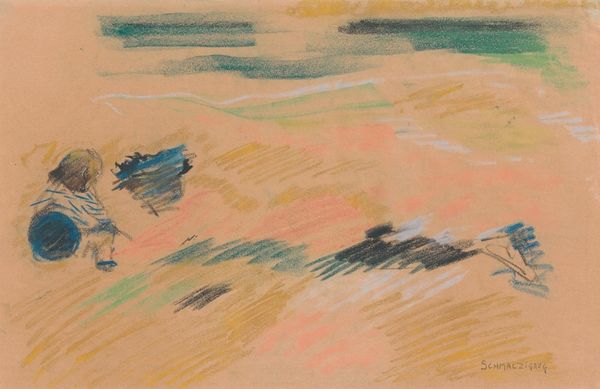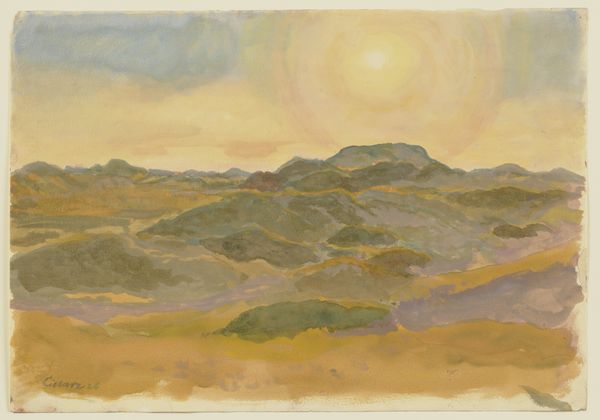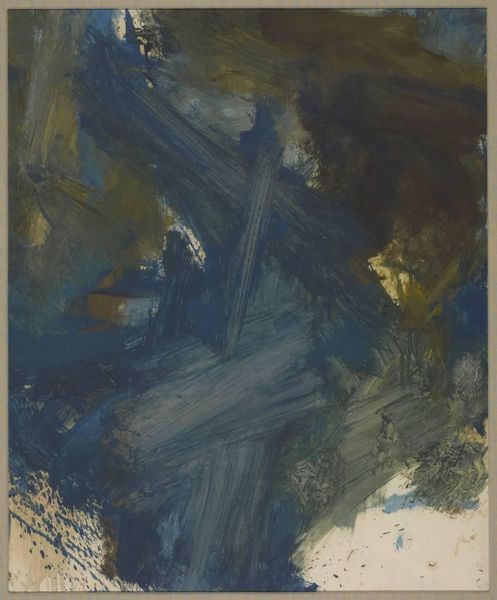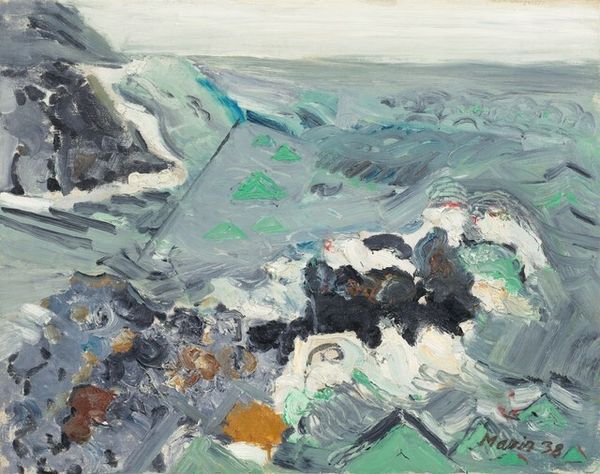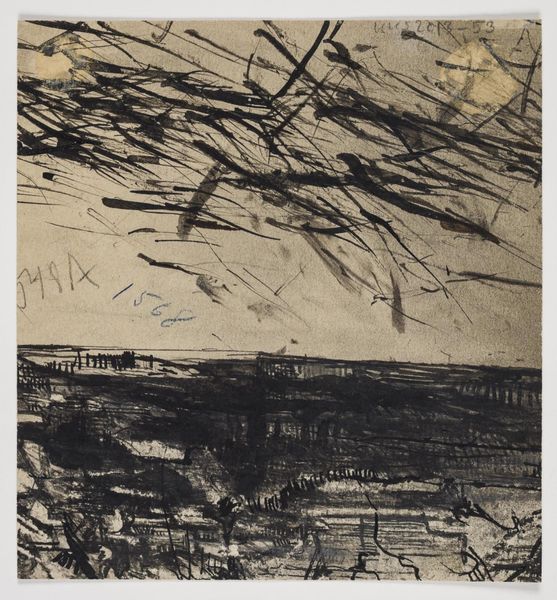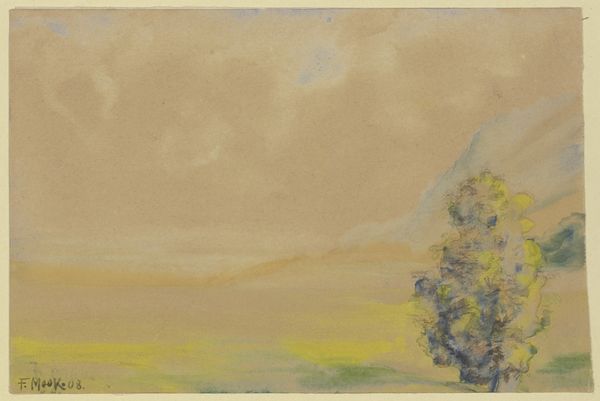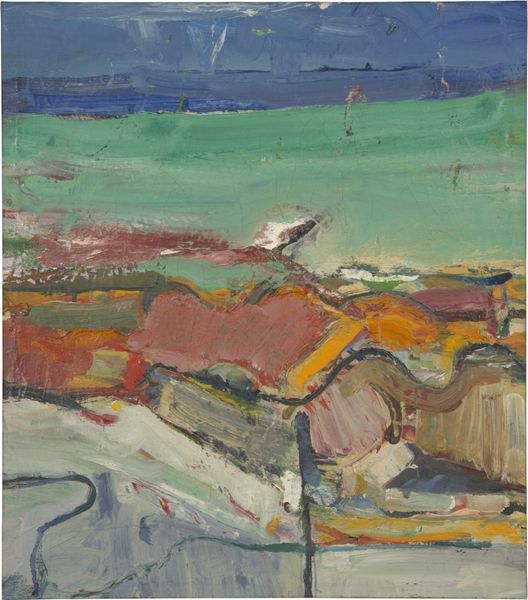
drawing, painting, paper, watercolor
#
drawing
#
painting
#
impressionism
#
landscape
#
paper
#
form
#
watercolor
#
expressionism
#
abstraction
#
line
Copyright: Public Domain
Curator: Before us, we have "Landscape near the Scheerhorn" by August Babberger, rendered with watercolor and paint on paper. Editor: It strikes me immediately as an unsettled landscape. The heavy blues and ochres clash, creating a feeling of disharmony. Almost a premonition of a storm, or perhaps the psychological landscape of someone on the edge. Curator: That emotional read is interesting. Structurally, note how Babberger uses the thick, almost frantic lines to delineate the forms. Observe how those lines contribute to the overall sense of movement and instability within the composition. Semiotically, these fractured lines may signify a deconstruction of traditional landscape art conventions. Editor: Right, but beyond the formal experimentation, isn't there a connection to be made to the societal anxieties of the early 20th century when rapid industrialization drastically reshaped our connections to nature? Perhaps Babberger's disturbed landscape is speaking to that collective unease. It's about the trauma inflicted on both the land and the psyche. Curator: I agree the thematic tension is present but look at the tension inherent in the color palette. The contrast of blues, greens and yellows pushes and pulls your eye throughout the image. There is a dynamic tension evident. Editor: And don't forget that Babberger himself experienced the horrors of war. Wouldn’t that context inevitably color our reading of such a chaotic scene? I wonder if those undulating lines and clashing colours symbolise trauma or displacement. This work feels incredibly raw, as though extracted directly from the artist's emotional landscape. Curator: I see that potential for trauma but ultimately this piece is successful because of its structural complexities and innovative implementation of Impressionistic landscape tradition into a new more expressive artistic terrain. Editor: Ultimately, whether we focus on the brushstrokes themselves or the larger social context, “Landscape near the Scheerhorn” refuses to let us passively observe the beauty of nature. Curator: Instead, it provokes a visceral experience. Editor: Yes, that feeling of nature unsettled.
Comments
No comments
Be the first to comment and join the conversation on the ultimate creative platform.

